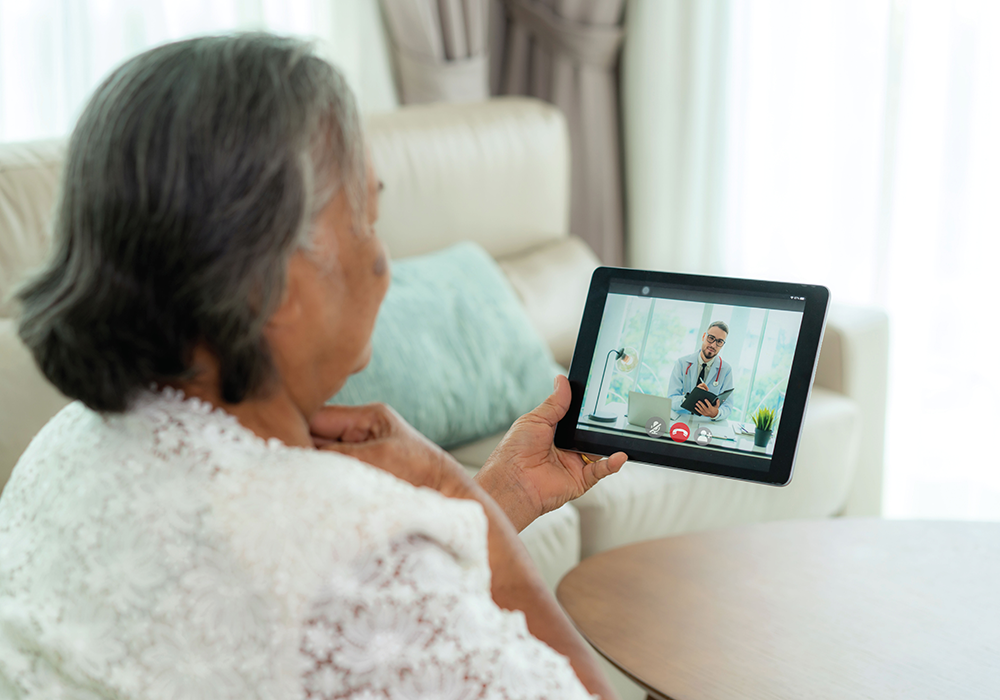Emily manages a rural clinic associated with an academic cancer center. Patients initially have an in-person consultation with their treating oncologists at the main campus but then use telehealth for subsequent visits. To support patients during teleoncology visits, Emily wants to initiate a plan to collaborate with the clinic staff to identify and address the ethical principles for oncology care using telehealth.
What Would You Do?
Patients report that telehealth improves their access to specialists and reduces their travel time for cancer-related provider appointments. However, oncologists say that telehealth can limit their ability to thoroughly assess patients, negatively affect the patient-provider relationship, and constrain their capacity to comfort people when delivering bad news.
Physical assessments: With telehealth, oncologists rely on other healthcare providers to physically assess patients, but older patients who are used to hands-on medicine say that makes them feel as though they are not receiving quality care. Furthermore, nurses without advanced physical assessment training may be unable to provide a requested exam (e.g., palpating a liver or breast mass).
Because of that evidence, Emily drafts a policy stating that advanced care providers (ACPs) will complete physical assessments, alleviating clinic nurses’ scope-of-practice concerns.
Patient-provider relationships: Patients may experience a rollercoaster of feelings throughout treatment and survivorship, and effectively providing consolation and empathy is an important aspect of oncology care. Technologic difficulties and lack of human presence with telehealth may degrade patients’ confidence in their oncology providers, especially when discussing undesirable news, and misinterpretation is a significant risk.
Emily consults the literature for best practices to bolster patient-provider relationships, and the infusion nurses ask patients to complete an anonymous survey about their telehealth visits (see sidebar). The oncologists at the main campus also complete a similar survey. The literature search revealed specific times when in-person visits were desirable: at the initial oncology consultation, during six-month or one-year follow-ups, and to discuss new and unusual symptoms.
The survey results correlated with the research. Most patients said it was important to meet with the treating oncologist to learn about the disease, prognosis, and treatment plan. Survey respondents wanted one of the clinic nurses or ACPs to be in the room when discussing any changes in treatment or test results, and they found written material helpful to support the conversation. The oncologists survey echoed the patients’ wishes to have a trusted member of the rural oncology team be present during crucial conversations.
The clinic staff institutes the survey suggestions and best practices into their telehealth oncology practice. One of the ACPs initiates an institutional review board–approved study to collect and analyze the results of implementing the changes. After six months, they find improved patient, provider, and staff satisfaction but no changes in overall patient outcomes. The ACP publishes the results to help improve ethical and logistic issues with teleoncology care.






